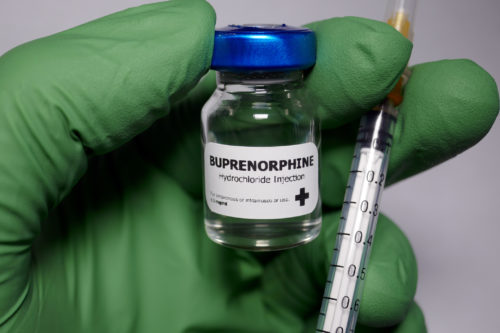Read the latest and greatest from our team
of incredible specialists.

Beach House Recovery Center » Blog » What is the Difference Between Subutex and Suboxone?
Suboxone and Subutex are both medications used to treat opioid addiction. The primary difference lies in their composition: Suboxone combines buprenorphine with naloxone, while Subutex contains only buprenorphine. This distinction impacts how each medication is used and prescribed.
Both drugs are classified as controlled substances due to their potential for misuse and abuse. Strict regulations govern their distribution and use.
To learn more about these treatment options for opioid addiction, contact us directly or continue reading below.

Suboxone is a prescription medication used to treat opioid addiction. It’s a combination of two drugs:
Suboxone works by blocking the effects of other opioids while providing relief from withdrawal symptoms. It’s often part of a comprehensive treatment plan that includes therapy and counseling.
Subutex is a medication used to treat opioid addiction. Unlike Suboxone, it contains only buprenorphine, a partial opioid agonist. This means it can reduce opioid cravings and withdrawal symptoms without producing the same high as full opioid agonists.
Subutex is often prescribed as part of a comprehensive treatment plan that includes therapy and counseling. It’s essential to use Subutex under the guidance of a healthcare professional.
As mentioned, suboxone and Subutex are both medications used to treat opioid addiction. While they share the active ingredient buprenorphine, their composition and potential for misuse differ.
Due to the lower risk of misuse, Suboxone is generally preferred for treating opioid addiction. However, both medications are effective when used as part of a comprehensive treatment plan that includes therapy and counseling.
Both Suboxone and Subutex work by utilizing buprenorphine, a partial opioid agonist. This means it binds to opioid receptors in the brain, reducing the intensity of withdrawal symptoms and cravings for opioids like heroin or prescription painkillers.
Key benefits of using these medications include:
It’s important to note that both Suboxone and Subutex are most effective when used as part of a comprehensive treatment plan that includes therapy and counseling.
Medication-assisted treatment (MAT) is a comprehensive approach to treating opioid addiction that combines medication with behavioral therapy. Suboxone and Subutex are essential components of MAT.
These medications help individuals with opioid use disorder by:
It’s crucial to emphasize that MAT is not a standalone treatment. It works most effectively in combination with behavioral therapies, counseling, and other support services. MAT aims to help individuals achieve long-term recovery and improve their overall quality of life.
Suboxone and Subutex can cause side effects, although they are generally well-tolerated. It’s essential to remember that individual responses to medication can vary.
Common side effects include:
Less common but more severe side effects may occur. It’s crucial to contact a healthcare provider immediately if you experience any of the following:
It’s important to note:
While less common than with full opioid agonists, overdose is still possible with Suboxone and Subutex, particularly when combined with other depressants such as alcohol, benzodiazepines, or other opioids. Injecting these medications, which is not the intended method of administration, significantly increases the risk of overdose.
The opioid overdose crisis in the United States highlights the dangers of opioid misuse.
According to the National Institute on Drug Abuse (NIDA), drug overdoses claimed the lives of nearly 108,000 people in the United States in 2022 alone. These deaths involved both illicit and prescription drugs, with a dramatic increase in fentanyl-related fatalities.
Prolonged use of Suboxone or Subutex can lead to additional health issues. These may include:
It’s crucial to approach treatment with these medications under the guidance of a healthcare professional. The decision to taper off Suboxone or Subutex should be made in consultation with a treatment team to minimize withdrawal symptoms and potential relapse.
Understanding the risks associated with Suboxone and Subutex is essential for making informed decisions about treatment.
The choice between Suboxone and Subutex depends on individual circumstances and treatment goals. Both medications are effective tools in opioid addiction treatment when used as part of a comprehensive care plan.
Suboxone, containing both buprenorphine and naloxone, is often preferred due to its reduced risk of misuse. However, Subutex, with buprenorphine alone, may be suitable for certain patients under close medical supervision.
Ultimately, the best medication for you will be determined by a healthcare professional who can assess your specific needs and treatment goals.
Remember: Medication is just one part of recovery. Combining medication-assisted treatment (MAT) with therapy, counseling, and support groups is essential for long-term success.
Suboxone and Subutex are valuable tools in the treatment of opioid addiction when used as part of a comprehensive MAT program. While they share similarities, their distinct compositions offer different benefits and risks.
It’s essential to remember that the decision between Suboxone and Subutex should be made in consultation with a healthcare professional who can tailor a treatment plan to individual needs.
Ultimately, recovery from opioid addiction is a journey that requires personalized care, support, and commitment. By combining medication with therapy and counseling, individuals can achieve long-term sobriety and improve their overall well-being.
If you or someone you know is struggling with opioid addiction, contact our team today. We are here to help you every step of the way.
Whether you’re researching for yourself or a loved one, Beach House can help. We understand that this is a serious time in your life and that the treatment center you choose matters. We want you to feel comfortable and empowered to make the right decision for yourself, a friend, or a family member. This is why a counselor is waiting and available to answer your questions and help put your mind at ease regarding the next steps. Many of the staff at Beach House have walked in your shoes. If you feel you’re ready or want more information about how to help a loved one, we can help today. You can also learn why we are voted the #1 rehab for addiction treatment in Florida.
We accept most major insurance plans and can verify your benefits quickly and confidentially.
We’re committed to helping you access the care you need, our admissions counselors can guide you through your coverage options and available resources.





"*" indicates required fields